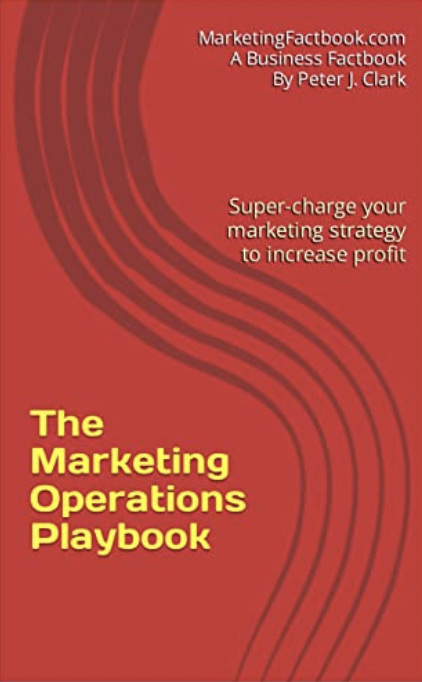5 Ways to Connect Loyalty to Business Results
Finding, keeping and growing the value of customers is the job of marketing, if you listen to Phil Kotler, a distinguished marketing professor and author of over 55 books on the subject. The emphasis on demand generation among marketers these days often shines the light on finding customers. Yet the keeping and growing are just as essential, according to Laura Patterson, president for VisionEdge Marketing.
In fact, customers coming in one door while good and valuable customers are going out another creates a potentially tenuous business situation. Take a brief moment to review just how much customer loyalty can impact your organisation.
Some common statistics associated with customer satisfaction and loyalty include the following:
- 98% of dissatisfied customers never complain, they just leave; and 75% of the reasons these customers leave has nothing to do with the product.
- 67% of customers switch from one company to another because they did not feel appreciated;
- 85% of dissatisfied customers tell 9 people about their poor experience and 13% tell 20 people, while a satisfied customer tells only 5 people.
- 80% of typical American company's customers are lost over a five-year period;
- Operating income will improve 20% for every 1% improvement in customer rate sustained over 5 years;
- Customers who come to you from a referral will have a 92% retention rate versus a 67% retention rate for customers obtained from advertising.
Can it be true?
Hopefully these numbers will alarm you. And hopefully you have satisfaction, switching, and advocacy data for your existing customers. What important to note about these numbers, is that customer loyalty creates business value. Customer loyalty impacts the bottom line, such as lowering acquisition costs, accelerating the rate of customer acquisition, increasing the customer lifetime value, and reducing costs to serve. Organisations employ a number of customer metrics like customer satisfaction, customer advocacy and/or use a net promoter score to measure the success of their customer loyalty efforts. Even though these are good metrics, they do not paint the whole picture, because they are not telling you what business outcome they expect their investment in customer loyalty to impact.
Having a clear understanding of what business needle you expect customer loyalty to move is critical. Measuring the movement of the business needle will indicate you whether or not your initiatives are working. Therefore, if you plan on implementing a customer loyalty initiative, make sure it fits in the context of what business needle or outcome you want to impact.
Connect your customer loyalty efforts to the business with these five steps:
- Be Specific
It is essential that you are specific on what business outcome you are expecting to impact when you will implement a new customer loyalty strategy. Possible outcomes may include: net new customers, reduce customer churn by X in a specific customer segment or tier, some amount of repurchase for existing products, some amount of purchase of new products, etc. This first step lays the foundation for how you will measure the success or failure of any customer loyalty efforts. - Be Active
A successful loyalty effort requires you that you at a minimum are doing two things well: provide quality products and services that meet your customer's expectations and being extremely responsive to your customers. Your need to be responsive in terms of problem resolution, meeting service requests and so on. You may need to do some research in order to create a baseline for the state of customer loyalty you are in today. Go look at emails, comment cards, surveys and service tickets you've received in the past. It is important for your customer that he feels appreciated and valued, so create a culture that encourages customers to voice their opinions and comments. Being active on soliciting information from customers is one good way to identify problems and opportunities. - Choose a Strategy
Define the strategy and programme within the context of the business outcome. Repurchase of existing products vs. acquisition of net new customers are two different outcomes and as such will mostly likely entail different strategies and programmes. - Measure
Research has suggested that changes in customer loyalty proceeds changes in business outcomes typically by a quarter. Create metrics that will measure and improve loyalty and the business outcome. Track your results so that you can employ statistical techniques to discover what aspects of your loyalty efforts are having the greatest impact. - Optimize
Once you've obtained results from your research and measurement efforts, make course adjustments that will move the business needle, not just improve loyalty. In some cases, you may need to revisit your strategy and programme in order to realise your specific business outcome. You may also need to invest in systems, processes and tools to improve service quality, address gaps, and enhance your loyalty efforts.
"Customer loyalty is one of marketing's primary responsibilities. Your job as a wise marketer is to connect your customer loyalty initiatives directly to business results and measure and communicate the value of these initiatives in terms that matter to your organisation," concluded Patterson.
VisionEdge has published a workbook on this subject, entitled 'Leveraging Eight Key Metrics for the Customer-Centric Organisation', which is available for purchase directly from the company's web site - click here (US$89 at the time of publishing).
Sources: VisionEdge Marketing / The Marketing Factbook.
Copyright © 2015 - 2025 The Marketing Factbook.
Categorised as:
- Customer Experience
- Customer Loyalty
- Knowing The Customer
- Marketing Know-How
- Marketing Technology
